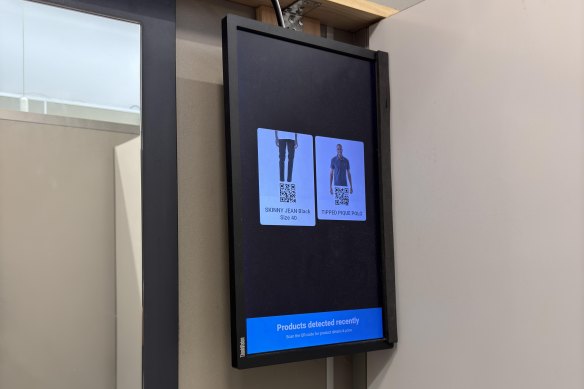
“There’s also an incredible amount of data that Kmart would be able to collect,” he said.
Loading
“What ranges, styles and sizes are popular? What stock sells across different Kmart stores throughout the store network? Does this change across different times of year?”
Melbourne personal stylist Sally Mackinnon has visited thousands of change rooms and has disliked most of them. Problems include poor lighting, poky cubicles, curtains that don’t shut properly and doors that fall off hinges.
“Change rooms in Australia are appalling,” Mackinnon said. “I think change rooms are an afterthought.”
She said customer service in fashion was not what it used to be, so technology was a possible solution.
“Imagine if that QR code told you there’s another size in the store, and you could press a button [and a staff member would retrieve it],” Mackinnon said.

Kmart hopes the technology will manage thefts and improve customers’ experiences.Credit: Reddit
“And I think people would genuinely be interested in product information, maybe a bit about the brand. Or even styling suggestions, so the QR code knows that you’re trying on this pair of pants and up pops, ‘You might also like to try’.”
Kmart hopes the technology will manage thefts and improve customers’ experiences.
“This technology helps us understand the flow of products throughout the store and manage loss prevention, but also has the potential to deliver a more seamless omnichannel experience to our customers in the future,” a company spokesperson said.
Australia is about five years behind the rest of the world when it comes to retail technology, said David McLaughlin, co-founder of Melbourne-based 3D body scanning start-up Bodd.

Dave McLaughlin (left), co-founder of 3D body scanning business Bodd, with director Alice Sidhu.Credit: Simon Schluter
Body scanning technology is used by airlines, theme parks, defence forces and emergency services to ensure employees have uniforms that fit.
Bodd is now moving into fashion and apparel. “I feel like we’re about to bring our technology back to Australia now after doing some big, interesting deployments overseas,” he said.
Loading
An innovation yet to be rolled out in Australian change rooms is the augmented reality shoppable mirror, which allows people to see what different clothes would look like on without physically trying them on.
Sydney-based party supply retailer The Party People last year said it was the first brand to trial one.
Mackinnon said mirrors couldn’t replicate knowing how something felt on the body. But anything that got people back into shops was a good thing, she said.
“If we can offer customers some kind of experience to get them into stores, I think it’s a great idea,” she said.









 Add Category
Add Category